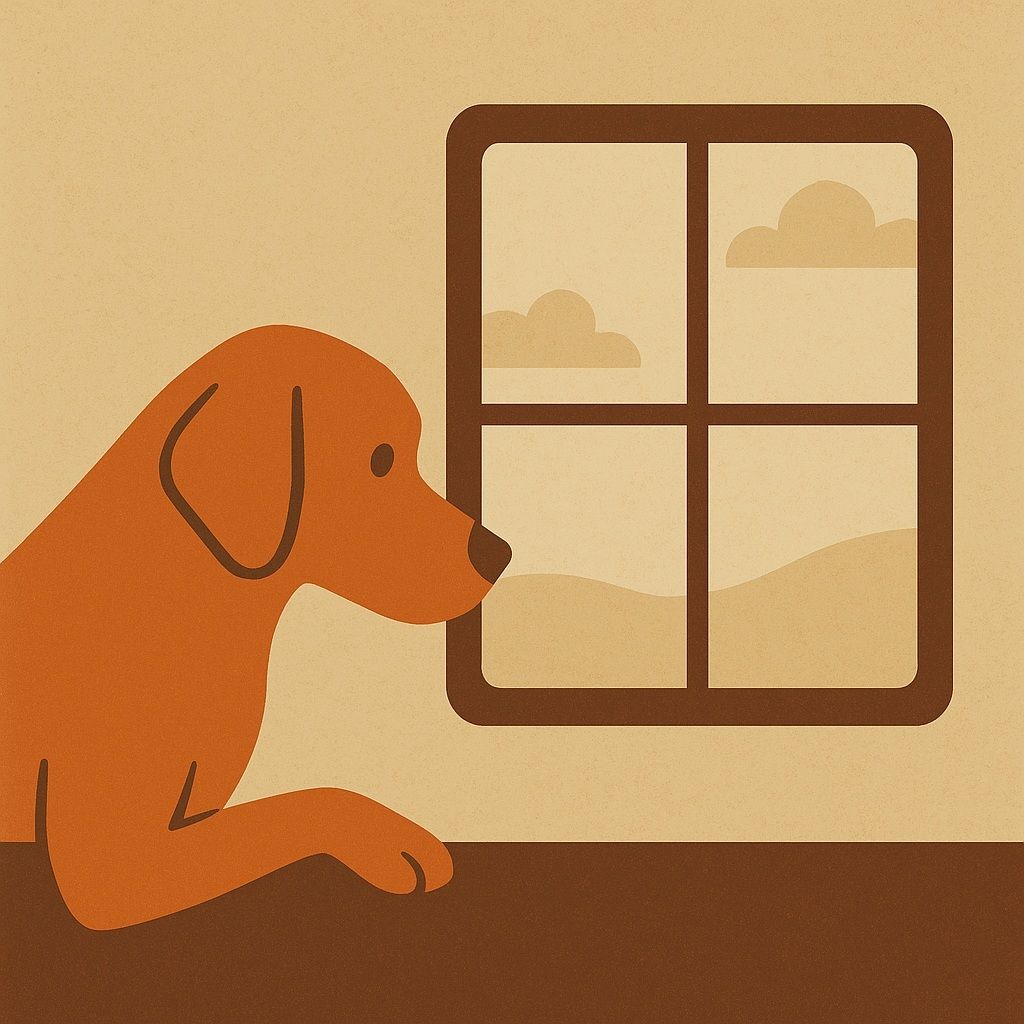- Beorn’s Bark Bus News
- Posts
- The Silent Struggle: How Separation Anxiety Affects Dogs (and What You Can Do About It)
The Silent Struggle: How Separation Anxiety Affects Dogs (and What You Can Do About It)

Most dogs love their humans with a loyalty that borders on obsession. That’s part of what makes them so special — and also what makes separation anxiety such a painful, often misunderstood condition.
Separation anxiety is more than a dog simply “missing you” while you’re at work. It’s a deep-rooted panic response that can lead to destructive behaviors, emotional distress, and even physical harm. If left unaddressed, it can damage the bond between dog and owner and significantly reduce a dog’s quality of life.
What Is Separation Anxiety in Dogs?
Separation anxiety occurs when a dog becomes excessively distressed when left alone or separated from a particular person. It's not boredom or mild whining. It’s a form of emotional suffering that can manifest as:
Intense barking, howling, or whining
Destructive behavior (chewing furniture, clawing at doors)
House soiling, even in fully house-trained dogs
Pacing or escape attempts
Excessive drooling or panting
Self-harm (chewing paws, pulling fur)
These behaviors usually begin within minutes of the person’s departure and subside only when they return — if at all.
Why It Happens
There’s no single cause, but common triggers include:
Sudden routine changes (e.g., a return to work after months at home)
Loss of a family member (human or animal)
Trauma or abandonment history (common in rescue dogs)
Over-attachment due to a lack of independence training
Some breeds are more prone to anxiety due to their temperament or close bonding instincts (e.g., German Shepherds, Vizslas, Border Collies, etc.), but any dog can be affected.
The Cost of Misunderstanding
One of the biggest problems with separation anxiety is how often it’s mistaken for “bad behavior.”
Dogs aren’t chewing furniture or tearing up crates out of spite — they’re panicking. When we punish anxious behavior, we don’t resolve the fear; we just add confusion and insecurity. The dog learns that their distress leads to even more stress when their human returns. It becomes a painful cycle.
How to Know If Your Dog Is Struggling
Some dogs suffer silently. If you’re gone all day, you may not see the damage anxiety is doing.
Watch for signs such as:
Your dog clings to you before you leave or shadows you constantly
They greet you with intense, frenzied excitement (not just “happy” excitement)
Neighbors report barking or whining while you’re away
They’re visibly stressed when they see you put on shoes, pick up keys, etc.
You find accidents or destruction near exits or windows
If you suspect separation anxiety, try a simple test: set up a camera when you leave the house. The footage may be more revealing than you expect.
What You Can Do About It
The good news? Separation anxiety is treatable. But it takes patience, empathy, and the right strategy.
1. Gradual Desensitization
This involves teaching your dog that departures are no big deal — by starting with very short absences and slowly increasing them over time. You might begin by just picking up your keys and sitting back down, or stepping outside for 10 seconds and returning.
2. Independence Training
Encourage your dog to rest or entertain themselves in a different room, even while you’re home. Reward calm, solo behavior with praise or treats. This helps reduce over-attachment.
3. Enrichment While You’re Away
A mentally and physically stimulated dog is less likely to spiral into anxiety. Try:
Puzzle feeders or treat-dispensing toys
A rotation of “special” toys only given during alone time
A dog walker or midday outing service (like, say, a Bark Bus… just saying)
4. Create a Safe, Predictable Environment
Some dogs benefit from a consistent “departure routine” and a cozy, confined space like a crate or a playpen — but only if they’ve been positively conditioned to enjoy it. Never force a crate on a dog with anxiety.
5. Professional Help
In more serious cases, you may need to involve a certified dog trainer or veterinary behaviorist. Some dogs benefit from short-term anxiety medication alongside training. This isn’t giving up — it’s giving your dog a chance to learn calmly.
Final Thoughts
Separation anxiety isn’t your fault — and it’s not your dog’s fault either. It’s a natural consequence of their incredible bond with you, combined with modern life that often leaves dogs alone for long stretches.
By recognizing the signs and taking action, you can transform your dog’s experience from daily dread to peaceful independence. You’ll build a more confident, secure companion — one who’s not just happy when you’re home, but also okay when you’re not.
Because loving your dog means helping them feel safe, even in your absence.